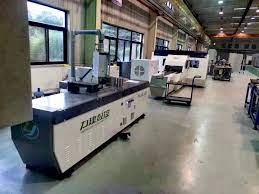In the ever-evolving landscape of manufacturing, innovation continues to shape the way industries operate and produce goods. One such technological marvel that has taken center stage is the bending machine – a versatile and indispensable tool that has revolutionized the way we manipulate and shape various materials. From metals to plastics, busbar machine have proven their mettle in an array of applications, offering unparalleled precision, efficiency, and consistency.
Bending machines are designed to take raw materials and transform them into intricate shapes and forms with exceptional accuracy. With programmable controls and advanced software, these machines can execute complex bends, curves, and angles that were once labor-intensive and time-consuming when done manually. This not only accelerates the production process but also ensures uniformity across the manufactured components, resulting in reduced wastage and higher quality outputs.
One of the standout features of modern bending machines is their adaptability to different materials. Whether it’s stainless steel, aluminum, copper, or even acrylics, these machines are engineered to handle a diverse range of materials, making them a staple across various industries. From automotive and aerospace to architecture and consumer electronics, bending machines play a pivotal role in shaping the components that form the backbone of these sectors.
Precision, the cornerstone of manufacturing, finds a staunch ally in bending machines. These machines can achieve accuracy down to fractions of a millimeter, ensuring that each bend is executed with meticulous attention to detail. This level of precision not only enhances the aesthetic appeal of the final product but also contributes to its functional integrity, a critical factor in industries where performance and safety are paramount.



